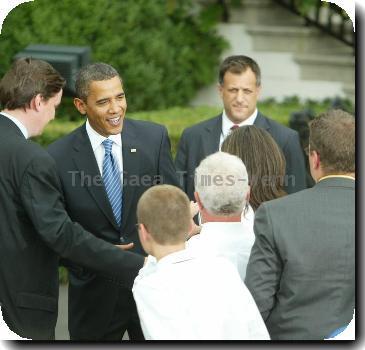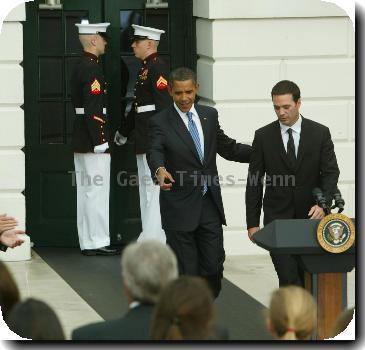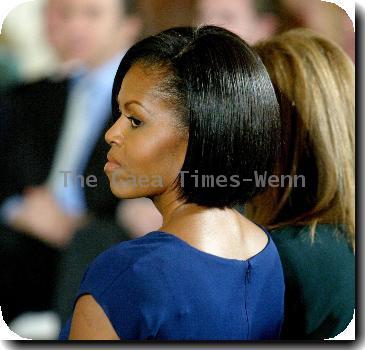Challenge for US in crucial Afghan city of Kandahar: How to keep battle from looking like war
By Anne Gearan, APSaturday, May 29, 2010
Fight in Kandahar: US says it won’t look like war
WASHINGTON — In the make-or-break struggle for Kandahar, birthplace of Afghanistan’s Taliban insurgency, U.S. commanders will try to pull off the military equivalent of brain surgery: defeating the militants with minimal use of force.
The goal of U.S.-led NATO forces will be to avoid inspiring support for the Taliban even as the coalition tries to root them out when the Kandahar operation begins in earnest next month.
The ancient silk road city — a dust-covered, impoverished jumble of one- and two-story concrete and mud brick — may not look like much of a prize.
But Kandahar, with a population of more than a million, was once the Taliban’s informal capital and an al-Qaida stronghold. It has served for centuries as a smuggler’s crossroads and trading hub linking southern Afghanistan to the Indian subcontinent.
President Barack Obama’s counterinsurgency strategy focuses on protecting population centers such as Kandahar from Taliban predation, with the hope of building support for the center government in Kabul.
The Taliban are deeply embedded in the local population, raising the risk of civilian casualties in major clashes. Neither are the Taliban regarded as an alien force. For many in Kandahar, they are neighbors, friends and relatives.
Haji Raaz Mohammad, a 48-year-old farmer from Kandahar, said he has never understood why the U.S. is trying to drive out the militants.
“I don’t know why they are doing it,” he said. “The Taliban are not outsiders. They are our own people.”
Because the task in Kandahar is so delicate, U.S. commanders talk about squeezing rather than driving out the Taliban. The military has struggled to come up with a description of the upcoming fight, avoiding terms like campaign, operation and battle because” because those words and others have annoyed Afghan President Hamid Karzai.
So the U.S. is calling it “Hamkari Baraye Kandahar,” which translates as “Cooperation for Kandahar.” Karzai simply calls it a “process.”
Whatever it’s called, U.S. military leaders say that unless it succeeds, the rest of the plan for pacifying Afghanistan is hollow.
Kandahar is not under direct Taliban control, but there is partial and ever-shifting Taliban influence. The insurgents’ authority overlaps with that of local criminal gangs, warlords, shakedown artists and drug operators.
Gen. Stanley McChrystal, the commander of NATO and U.S. forces in Afghanistan, said that a traditional offensive in Kandahar inevitably would cause civilian casualties and damage property, winning propaganda points for the insurgents.
“This is not Fallujah,” Secretary of State Hillary Rodham Clinton has said. That’s a reference to the city in western Iraq, which in 2004 saw the most intense and controversial urban combat undertaken by the U.S. military since Vietnam.
American troops won the battle, but many Iraqis viewed the devastated city as evidence U.S. forces were brutal occupiers.
“Lessons have been learned since Iraq, a lot of lessons,” Clinton said.
Whatever the U.S. and NATO are planning for Kandahar, the Taliban seem likely to put up stiff resistance.
In the past two weeks, insurgents have launched two bold assaults on the largest U.S. and NATO military bases in Afghanistan, including the sprawling, fortified Kandahar airfield. Both attacks were quickly repelled, but demonstrated the militants can strike even foreign military bastions at will.
The push to tame Kandahar is expected to begin in earnest shortly after an Afghan peace conference, or jirga, scheduled for the coming week. Karzai has convened the meeting of politicians and powerbrokers as a prelude to eventual negotiations with Taliban leaders.
U.S. military commanders say that only when the Taliban realize they can’t win the war will they come to the peace table. U.S. forces and Afghan troops are already patrolling the orchards just outside the city, trying to cut off insurgent supply lines and eliminate hideouts.
In the weeks ahead, plans call for ringing Kandahar with a mix of U.S., NATO and Afghan soldiers and police.
British Maj. Gen. Nick Carter told reporters at the Pentagon this past week that foreign forces will play the smallest role in the city center. They’ll be far more visible in surrounding districts such as Arghandab, Zhari and Panjwai, where the insurgents who have gained strong footholds.
U.S. forces will help train more Afghan police, and “impose a ring of security around the outskirts of the city to keep any potential insurgent intimidation at bay,” said Carter, the NATO commander in southern Afghanistan.
Roughly two U.S. brigades will be dispatched for the Kandahar operation, a senior official with the NATO-led force said, including an Army infantry brigade and, unusually, a military intelligence brigade.
The U.S. plans to help build checkpoints at city entrances and up to nine additional police stations, the senior NATO official said, along with housing for government and aid workers.
NATO officials spoke on condition of anonymity because not all forces are in place.
Victory in Cooperation for Kandahar may be hard to define. Eventually, U.S. military officials say, Afghans there must be persuaded that they can trust the government not to fleece them and to keep the gangsters and warlords at bay.
Associated Press writers Mirwais Khan and Christopher Torchia in Kandahar contributed to this report.
Tags: Afghanistan, Asia, Barack Obama, Central Asia, Iraq, Kandahar, Middle East, Municipal Governments, North America, United States, Washington


